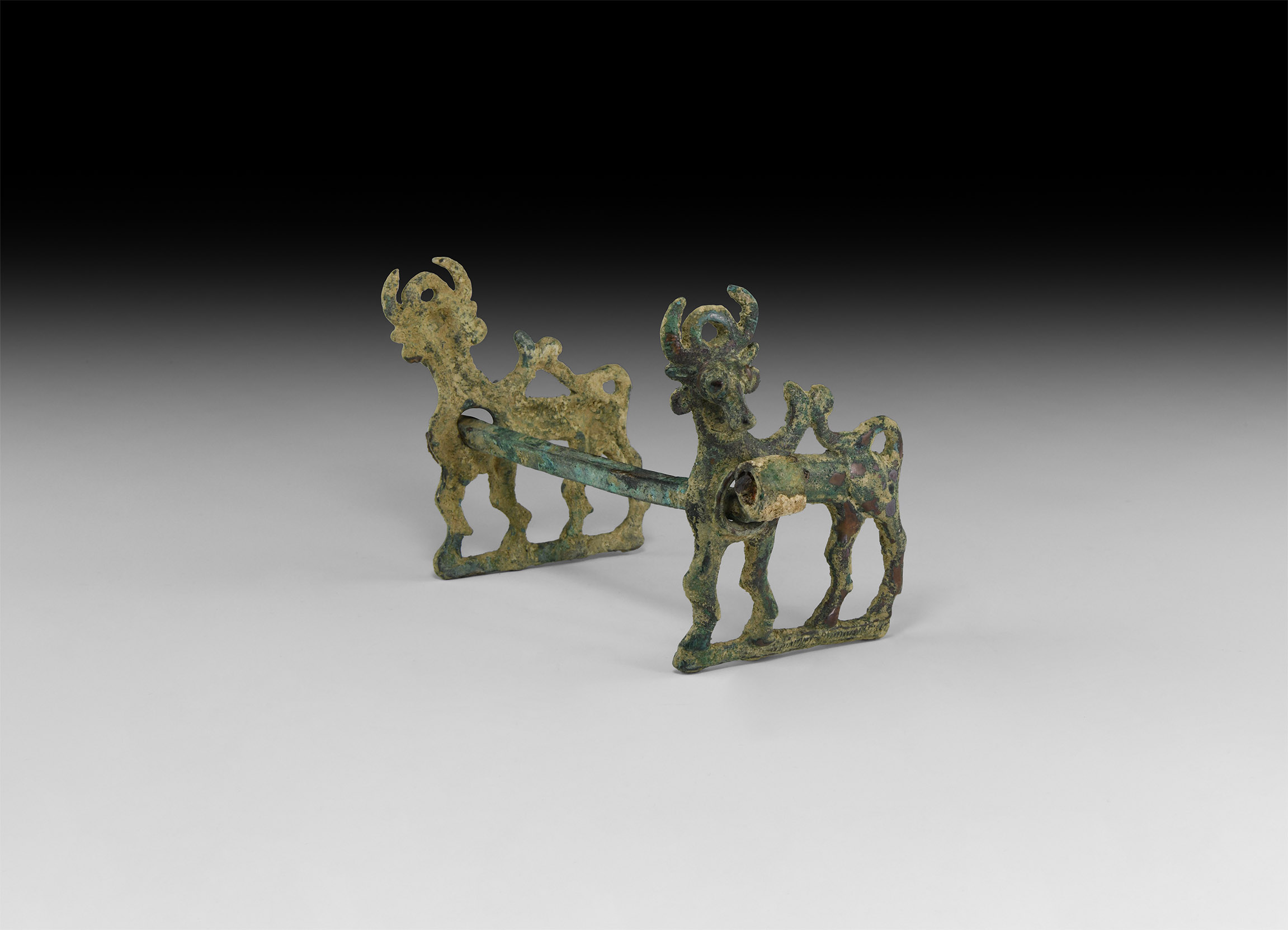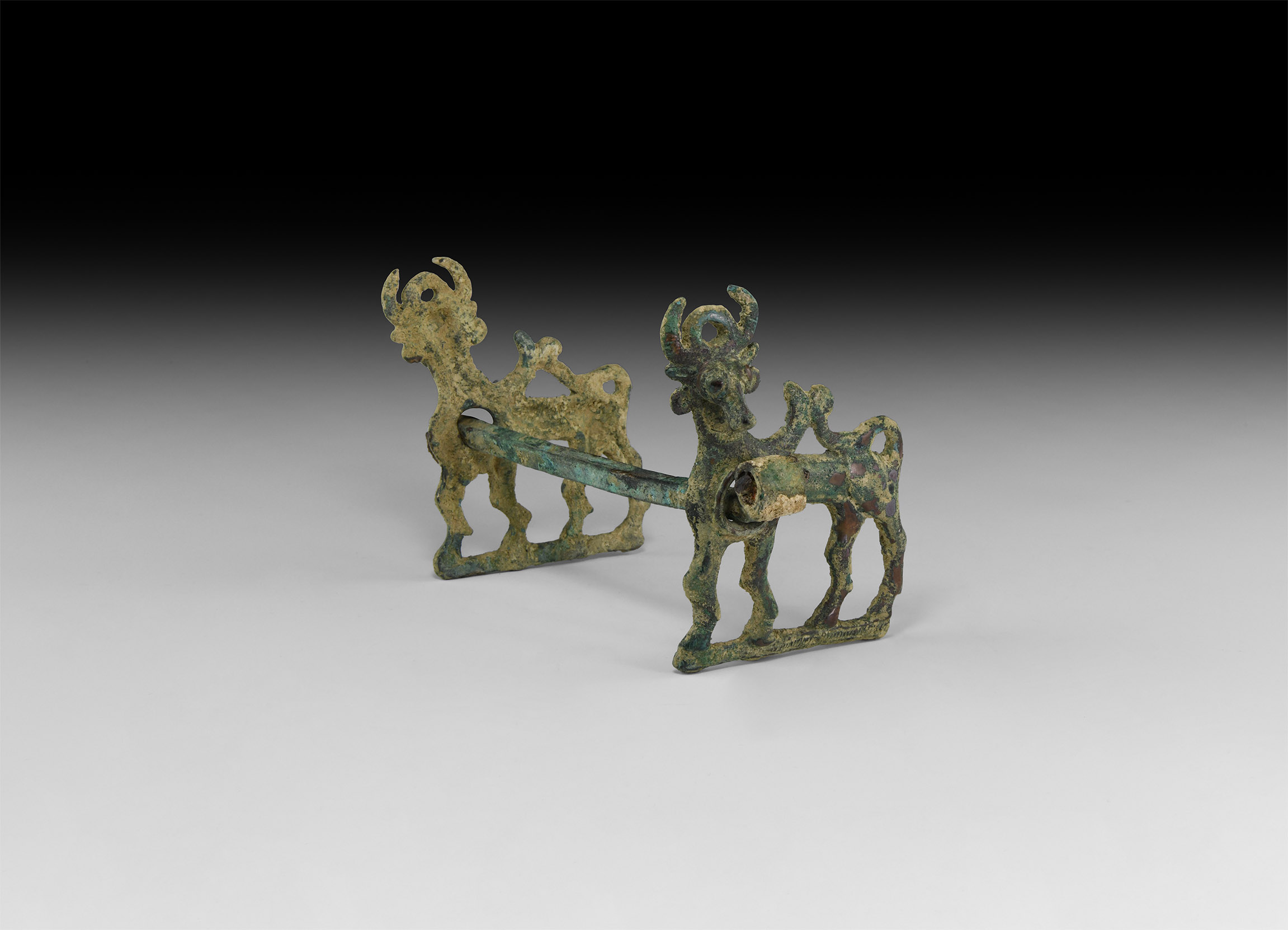WESTERN ASIATIC LURISTAN HORSE BRIDLE CHEEKPIECE 7th-6th century BC A bronze cheekpiece from a horse's bridle formed as an advancing horse on a base line, with halter to the neck and bridle fittings, looped tail to the rear; large socket with reinforced rim to the chest; two studs to the reverse. 176 grams, 12.5cm (5"). Fine condition. Provenance From the collection of a North West London gentleman; acquired in the 1980s. Literature Cf. Legrain, L. Luristan Bronzes in the University Museum, Pennsylvania, 1934, item 53; Muscarella, O.W. Bronze and Iron. Ancient Near Eastern Artifacts in the Metropolitan Museum of Art, New York, 1988 item 254 and discussion of the type. Footnotes Ornamental horse bits are characteristic of the pastoral people who occupied what is now the mountainous region of Luristan in western Iran from the ninth to seventh centuries BC. These distinctive horse bits, which feature a bar mouthpiece, and elaborate cast cheekpieces, have mostly been found in cemeteries where they appear near or under the head, and the weight and size of these pieces suggests that they were votive offerings rather than functional.
WESTERN ASIATIC LURISTAN HORSE BRIDLE CHEEKPIECE 7th-6th century BC A bronze cheekpiece from a horse's bridle formed as an advancing horse on a base line, with halter to the neck and bridle fittings, looped tail to the rear; large socket with reinforced rim to the chest; two studs to the reverse. 176 grams, 12.5cm (5"). Fine condition. Provenance From the collection of a North West London gentleman; acquired in the 1980s. Literature Cf. Legrain, L. Luristan Bronzes in the University Museum, Pennsylvania, 1934, item 53; Muscarella, O.W. Bronze and Iron. Ancient Near Eastern Artifacts in the Metropolitan Museum of Art, New York, 1988 item 254 and discussion of the type. Footnotes Ornamental horse bits are characteristic of the pastoral people who occupied what is now the mountainous region of Luristan in western Iran from the ninth to seventh centuries BC. These distinctive horse bits, which feature a bar mouthpiece, and elaborate cast cheekpieces, have mostly been found in cemeteries where they appear near or under the head, and the weight and size of these pieces suggests that they were votive offerings rather than functional.









.jpg)





Testen Sie LotSearch und seine Premium-Features 7 Tage - ohne Kosten!
Lassen Sie sich automatisch über neue Objekte in kommenden Auktionen benachrichtigen.
Suchauftrag anlegen